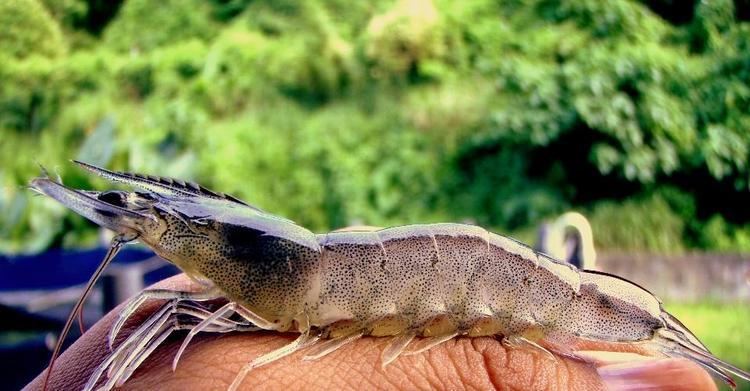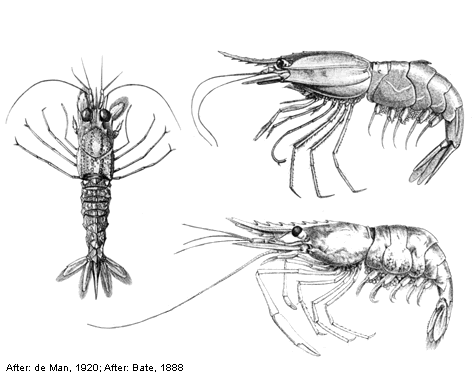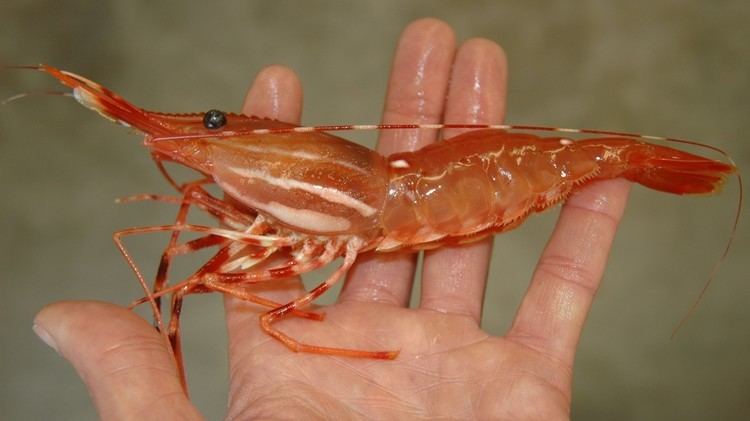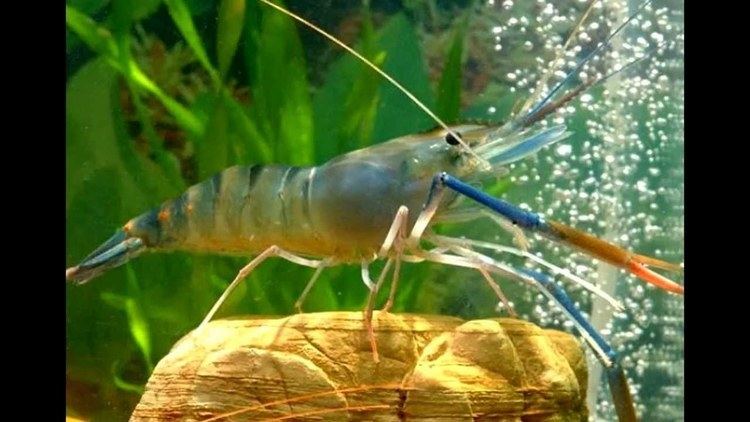Scientific name Caridea Lifespan 1 – 6 years | Length 1.2 – 30 cm Clutch size 50,000 – 1,000,000 Rank Infraorder | |
 | ||
Lower classifications Palaemonidae, Caridina, Macrobrachium, Neocaridina, Pandalidae | ||
Trampa camar n pistola trampa eliminar mantis acuario marino venezuela mantis shrimp trap
The Caridea, commonly known as caridean shrimp, are an infraorder of shrimp within the order Decapoda. They are found widely around the world in both fresh and salt water.
Contents
- Trampa camar n pistola trampa eliminar mantis acuario marino venezuela mantis shrimp trap
- Biology
- Lifecycle
- Commercial fishing
- Taxonomy
- Related taxa
- Fossil record
- References

Biology
Carideans are found in every kind of aquatic habitat, with the majority of species being marine. Around a quarter of the described species are found in fresh water, however, including almost all the members of the species-rich family Atyidae and the Palaemonidae subfamily Palaemoninae. They include several commercially important species, such as Macrobrachium rosenbergii, and are found on every continent except Antarctica. The marine species are found at depths to 5,000 m (16,000 ft), and from the tropics to the polar regions.

In addition to the great variety in habitat, carideans vary greatly in form, from species a few millimetres long when fully grown, to those that grow to over a foot long. Except where secondarily lost, shrimp have one pair of stalked eyes, although they are sometimes covered by the carapace, which protects the cephalothorax. The carapace also surrounds the gills, through which water is pumped by the action of the mouthparts.

Most carideans are omnivorous, but some are specialised for particular modes of feeding. Some are filter feeders, using their setose (bristly) legs as a sieve; some scrape algae from rocks. The snapping shrimp of the genus Alpheus snap their claws to create a shock wave that stuns prey. Many cleaner shrimp, which groom reef fish and feed on their parasites and necrotic tissue, are carideans. In turn, carideans are eaten by various animals, particularly fish and seabirds, and frequently host bopyrid parasites.
Lifecycle

In most species of caridean shrimp, the females lay 50,000 to 1 million eggs, which hatch after some 24 hours into tiny nauplii. These nauplii feed on yolk reserves within their bodies and then undergo a metamorphosis into zoeae. This second larval stage feeds in the wild on algae and after a few days metamorphoses again into the third stage to become myses. At this stage, the myses already begin to appear like tiny versions of fully developed adults and feed on algae and zooplankton. After another three to four days, they metamorphose a final time into postlarvae: young shrimp having all the characteristics of adults. The whole process takes about 12 days from hatching. In the wild, the marine postlarvae then migrate into estuaries, which are rich in nutrients and low in salinity. There they grow and eventually migrate back into open waters when they mature. Most adult carideans are benthic animals living primarily on the sea floor.

Common species include Pandalus borealis (the "pink shrimp"), Crangon crangon (the "brown shrimp") and the snapping shrimp of the genus Alpheus. Depending on the species and location, they grow from about 1.2 to 30 cm (0.47 to 11.81 in) long, and live between 1.0 and 6.5 years.
Commercial fishing
The most significant commercial species among the carideans is Pandalus borealis, followed by Crangon crangon. The wild capture production of P. borealis is about ten times that of C. crangon. In 1950, the position was reversed, with the capture of C. crangon about ten times that of P. borealis.
In 2010, the global aquaculture of all shrimp and prawn species (3.5 million tonnes) slightly exceeded the global wild capture (3.2 million tonnes). No carideans were significantly involved in aquaculture, but about 430,000 tonnes were captured in the wild. That is, about 13% of the global wild capture, or about 6% of the total production of all shrimp and prawns, were carideans.
Taxonomy
The infraorder Caridea is divided into 15 superfamilies:
Related taxa
Shrimp of the infraorder Caridea are more closely related to lobsters and crabs than they are to the members of the sub-order Dendrobranchiata (prawns). Biologists distinguish these two groups based on differences in their gill structures. The gill structure is lamellar in carideans but branching in dendrobranchiates. The easiest practical way to separate true shrimp from dendrobranchiates is to examine the second abdominal segment. The second segment of a carideans overlaps both the first and the third segment, while the second segment of a dendrobranchiate overlaps only the third segment. They also differ in that carideans typically have two pairs of chelae (claws), while dendrobranchiates have three. A third group, the Stenopodidea, contains around 70 species and differs from the other groups in that the third pairs of legs is greatly enlarged.
Procarididea are the sister group to the Caridea, comprising only eleven species.
Fossil record
The fossil record of the Caridean is sparse, with only 57 exclusively fossil species known. The earliest of these cannot be assigned to any family, but date from the Lower Jurassic and Cretaceous. A number of extinct genera cannot be placed in any superfamily:
